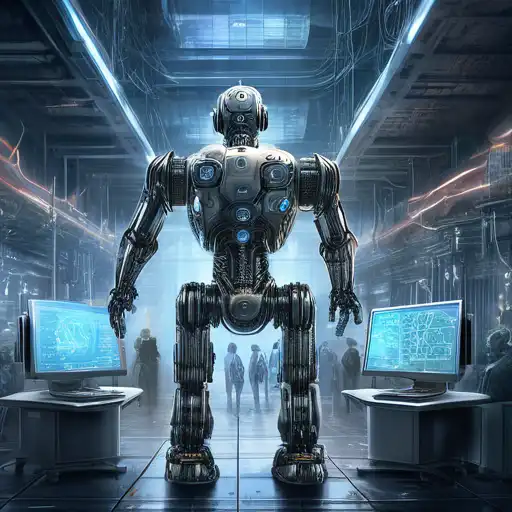Introduction to AI and Machine Learning
In the rapidly evolving world of technology, Artificial Intelligence (AI) and Machine Learning (ML) stand out as two of the most groundbreaking advancements. While often used interchangeably, these terms represent distinct concepts with unique applications and implications. This article delves into a comparative study of AI and ML, shedding light on their differences, similarities, and how they're shaping the future.
Understanding Artificial Intelligence
Artificial Intelligence is a broad field of computer science focused on creating systems capable of performing tasks that typically require human intelligence. These tasks include problem-solving, understanding natural language, recognizing patterns, and making decisions. AI can be categorized into two types: narrow AI, which is designed to perform a specific task, and general AI, which can understand, learn, and apply knowledge in a way similar to human intelligence.
Understanding Machine Learning
Machine Learning, a subset of AI, involves the development of algorithms that allow computers to learn from and make predictions or decisions based on data. Unlike traditional programming, where humans explicitly code the behavior, ML models improve their performance as they are exposed to more data over time. ML is further divided into supervised learning, unsupervised learning, and reinforcement learning, each with its own set of applications and methodologies.
Key Differences Between AI and Machine Learning
- Scope: AI encompasses a wider range of technologies and applications, while ML is specifically focused on algorithms that learn from data.
- Functionality: AI aims to simulate human intelligence across a broad spectrum of activities, whereas ML is about creating systems that can learn from data to perform specific tasks.
- Dependency: ML is dependent on data to learn and improve, but AI can function based on predefined rules without necessarily learning from data.
How AI and Machine Learning Work Together
Despite their differences, AI and ML are deeply interconnected. ML provides the foundation for many AI systems, enabling them to learn from data and improve over time. For example, AI-powered chatbots use ML to understand and respond to user queries more effectively. Similarly, recommendation systems on e-commerce sites leverage ML algorithms to personalize suggestions, a feature that falls under the broader umbrella of AI.
The Future of AI and Machine Learning
The integration of AI and ML is driving innovation across industries, from healthcare to finance to entertainment. As these technologies continue to evolve, we can expect more sophisticated applications that further blur the lines between human and machine capabilities. The future promises advancements in autonomous vehicles, personalized medicine, and smart cities, all powered by the synergistic relationship between AI and ML.
For those interested in diving deeper into the world of AI and ML, exploring data science can provide valuable insights into the algorithms and techniques that power these technologies.
Conclusion
AI and Machine Learning are transforming the way we live and work, offering unprecedented opportunities for innovation and efficiency. By understanding the distinctions and connections between these two fields, we can better appreciate their potential and the challenges they present. As we stand on the brink of a new era in technology, the comparative study of AI and ML not only enlightens us about their current state but also inspires us to imagine the possibilities of tomorrow.
